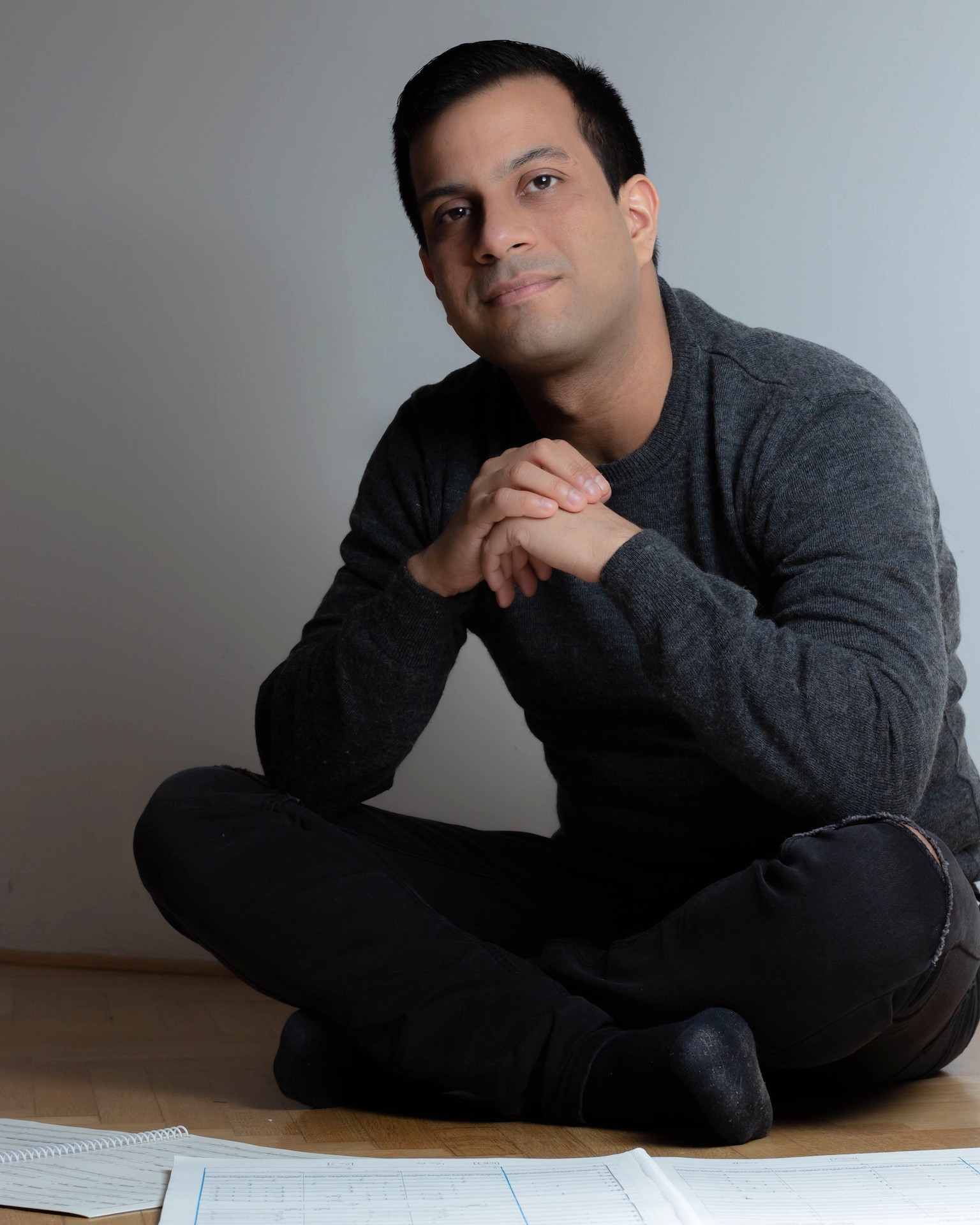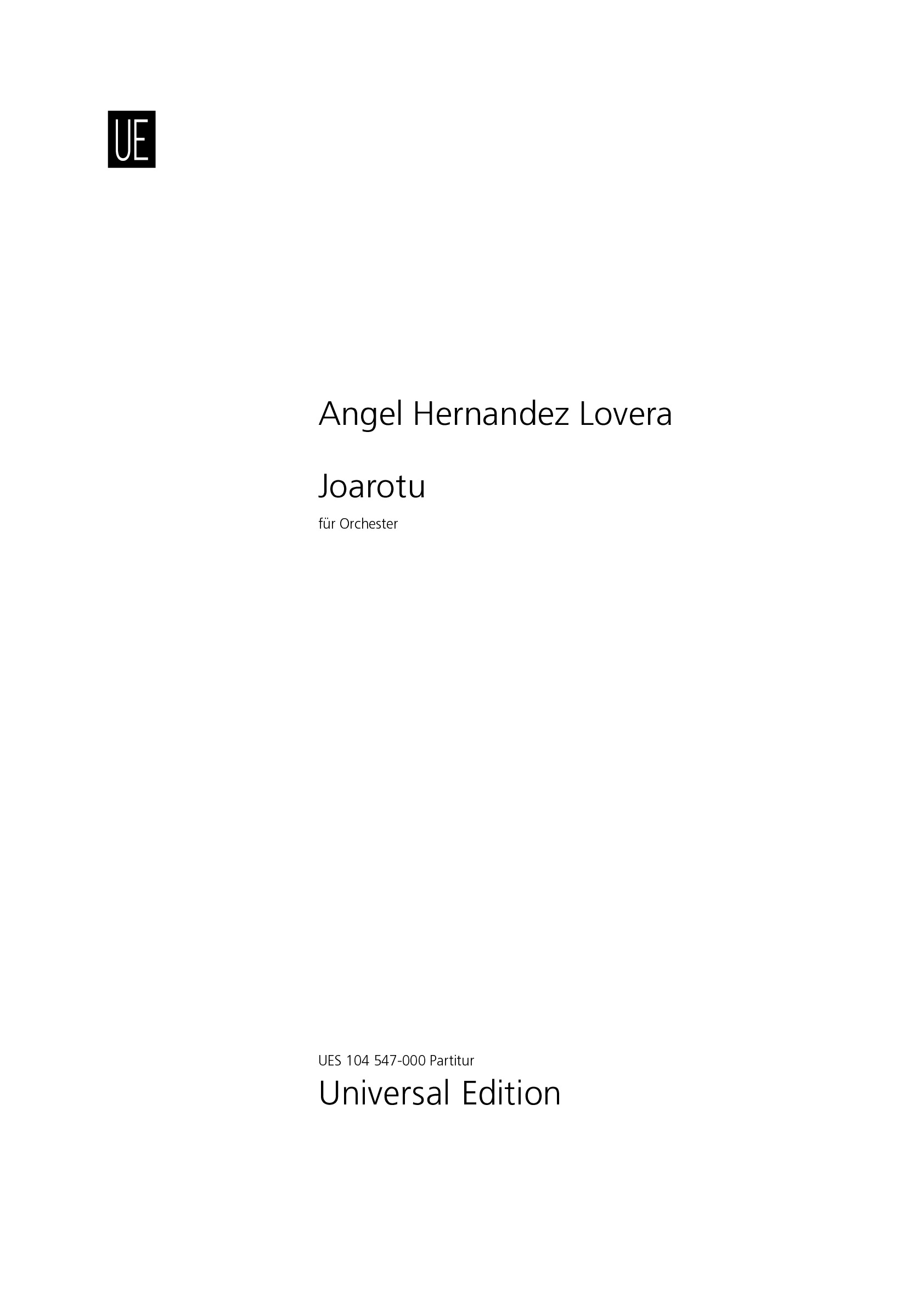

Angel Hernandez Lovera
Joarotu
Short instrumentation: 2 2 2 2 - 4 5 3 1, timp, perc(2), hp, pno, str
Duration: 10'
Instrumentation details:
1st flute
2nd flute (+picc)
1st oboe
2nd oboe (+c.a)
1st clarinet in Bb
2nd clarinet in Bb (+bass cl(Bb))
1st bassoon
2nd bassoon (+cbsn)
1st horn in F
2nd horn in F
3rd horn in F
4th horn in F
1st trumpet in C
1st trumpet in Bb
1st trumpet in Bb
2nd trumpet in Bb
2nd trumpet in C
1st trombone
bass trombone
2nd trombone
tuba
timpani
1st percussion
2nd percussion
harp
piano
violin I (10 players)
violin II (8 players)
viola (8 players)
violoncello (6 players)
double bass (4 players)
Joarotu
Sample pages
Work introduction
"Joarotu: A Shamanic Journey to Balance."
"Joarotu" is a musical piece that pays homage to the culture of the Warao people and emphasizes the crucial role of their shamans in the search for natural balance. The piece tells of an ancient ritual to remove the "curse of Joa" caused by harmful substances from nature. Aggressive chords and rhythmic patterns open the work, symbolizing the confrontation with the Joa. The first Warao chant marks the arrival of the shaman. The central passage reveals the ritual event in which the sounds of nature merge with the Warao chants. The curse attempts to return, but Joarotu absorbs it to establish balance between good and evil. The coda contains the hope-bringing Warao chant. "Joarotu" is a unique musical journey into the culture of the Warao, an ethnic group living in northern Venezuela, that encourages reflection on balance.
What is necessary to perform this work?
Schlagzeug I:
Xylofon
Vibrafon
2 Kuhglocken (hoch und tief)
2 Bongos, 3 Tom-toms
(hoch, tief - hoch, mittel, tief) )
Glockenspiel
Kleine Trommel
Maracas (hoch)
Röhrenglocken
Schalgzeug II:
Peitsche
Vibra Slap
3 Becken
Rute
5 Woodblocks
Gongs (C1 - F#1 - G2 - C#2)
große Trommel
Congas

